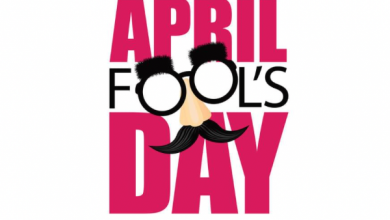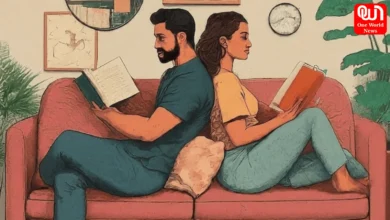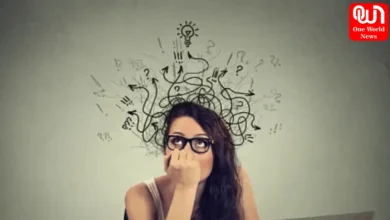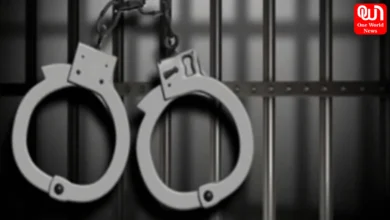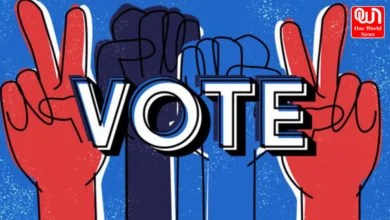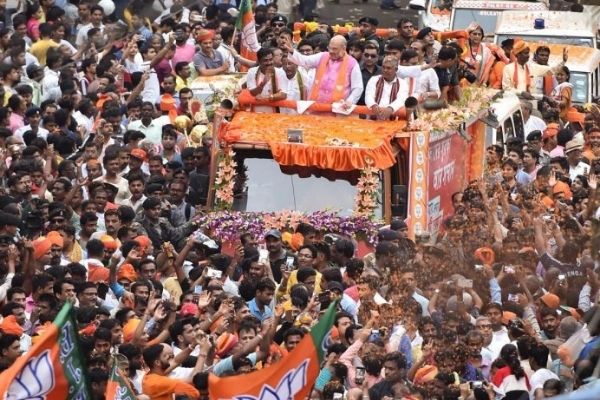
Major takeaways from Bengal elections, the political tussle and what to expect
Bengal Elections for the 294-seats will be held in eight phases from March 27 to April 29. The counting of votes is scheduled for May 2. This fight can be seen as three-cornered with Trinamool Congress seeking a third term, Congress and Left front fighting together, and Bharatiya Janata Party hoping to make it to Eastern states this time. For many decades the state has suffered bitter political violence and after an impressive show in the 2019 general elections, the BJP is confident of breaching the TMC’s stronghold.
What is the tussle all about?
The West Bengal election is mostly going to be a Narendra Modi versus Mamata Banerjee contest. The BJP is already trying its best to paint TMC with the minority ‘appeasement’ brush, which constitutes 27% of the total population, the second-highest in the country. The BJP is certainly harping on TMC’s decisions about keeping Durga-Puja Idol immersion on halt till 10 PM because of Muharram, Banerjee getting triggered by the chants of Jai Shree Ram or her having a soft spot for illegal immigrants, among others. As a result, with the Muslims backing Banerjee, there is a high probability of the Hindus standing with the BJP.
The second factor that is going to affect the whole political tussle is the level of satisfaction among the voters with the current government, the TMC. The TMC’s performance on various parameters such as health, education, economy, law and order, etc. will be evaluated. While releasing her manifesto, Mamata Banerjee said that her government has reduced poverty by 40% in the state and topped the country in providing jobs under the Mahatma Gandhi National Rural Employment Guarantee Act. While the third factor might be the lack of opposition unity. As the two main opposition blocks, the BJP and the Left-Congress combine are rivals at the national level and this will probably benefit TMC by the split of the opposition vote.
The next important thing is the caste arithmetic factor. The claim that caste was absent in Bengal politics has always been problematic. The concentration of upper castes (collectively referred to as Bhadralok) in urban Bengal and their secession from rural power structures allowed them to live the fiction of casteless politics. The Bhadhraloks only comprise 1/5th of the total population of Bengal, while it has the highest SC population in India after Uttar Pradesh. The Matua community being at the heart has a 3 cr population across the state.
Modi’s ability to sell the ‘double engine ki sarkar’ story could very well decide the BJP’s fortunes. Moreover, the economic distress inflicted on the people due to COVID-19 has also impacted the state’s finances, and they need central assistance to tide through these tough times.
But Mamata didi is certainly no less as she is playing around with the Bengali pride. The TMC has launched the ‘Amra versus ora’ (insider versus outsider) campaign showcasing the BJP as a party of North Indians who have no knowledge and regard for the rich culture and heritage of West Bengal. TMC is indeed harping over regional nationalism to counter the BJP’s Hindu nationalism. On several occasions, the West Bengal chief minister Mamata Banerjee has herself called the BJP an “outsiders’ party.” In her first election rally at Bankura, around 200 kilometres from Kolkata, she attacked the saffron party and said, “Some people were sent to Bengal from Delhi. These are not people from Bengal. These are outsiders. They will snatch whatever you have. They will loot your belongings.”
Else what makes BJP unbeatably ahead in the race to win West Bengal is its social media power, backed with enormous resources, that certainly dwarfs the efforts of the TMC, which is only a regional party. The social media reach of the BJP matters because it does play an important part in constructing the idea of the party’s inevitable success in ousting Mamata Banerjee. They make people believe that BJP is going to be the winner anyway.
Read more: BURQA BAN: To‘deradicalise’ Muslims or is it yet another attack on Muslim identity?

Image source – new Indian express
Modi Vs Mamata: The Manifesto
BJP President JP Nadda today said that the saffron party will bring in a new culture in state politics where cut-money won’t have any place. Along with promising fast-paced probes in the Saradha and Rose Valley chit fund scam cases, it is also promised a special rehabilitation package for the victims’ families of political violence.
In its ‘Sankalp Patra, the saffron party is also likely to propose a special law against ‘love jihad’, a controversial law that focuses ostensibly on criminalising forcible religious conversions. The BJP will be laying special emphasis on boosting religious tourism in the state. Along with these BJP also will implement the Ayushman Bharat scheme when voted to power. Besides promising transparent and corruption-free governance, BJP is stressing heavily on West Bengal’s lack of industrial growth and decline over the decades under Trinamool and Left Front rule.
To check the saffron surge, the TMC has gone on an overdrive in announcing new schemes besides making sure that its previous welfare programmes stay fresh on the minds of the people. TMC has promised a minimum income guarantee for all families in West Bengal, an increase in financial assistance for farmers, and free doorstep delivery of ration. It has also pledged the inclusion of more communities on the Other Backward Classes list along with strengthening the economy, job creation, improving health and education indices, and housing to all.
The BJP, which had won two seats five years ago, won 18 of the 42 constituencies, seeing its vote share rise to 40.64 per cent, just 3 per cent less than the TMC’s. The analysis showed that the votes came principally from Adivasis, backward castes and Dalits.
The strongest chord of BJP that’s hitting hard is around CAA and NRC resurfacing in recent days, even though most of these marginalised SC Hindu communities have been against Brahmanical forces, they are willing to support BJP to oust outsiders and gain legible citizenship themselves through the implementation of the CAA-NRC. As a result, caste has become a major talking point. In 2019 BJP won 4 out of these 10 SC seats in west Bengal, swaying the Matua vote on the back of one thing only, that is the citizenship amendment act. Digging up the past, Bengal saw a large scale influx of these social groups after the partition and operatively for BJP these are Hindu refugees who are “persecuted” in some other countries and will be granted citizenship under CAA. Therefore, these groups are the main target for BJP.
On the other hand, Mamata has tried to revive her “lost connection” with the community by saying that Matuas had already been identified as Indian citizens and there was no question of giving them “new citizenship”.
The saffron party has also made the political violence allegedly instigated by TMC against its workers an election issue, coining slogans like “Ebar Bangla, parle shamla” (Save Bengal if you can this time).
The opinion polls: Conclusion
The Trinamool Congress is predicted to get a 42.2 per cent vote share and 157 seats, 57 less than what it had got in 2016. The BJP, on the other hand, will increase its tally by about 100 seats but would still fall short of the majority, according to an opinion poll conducted by Times Now-C Voter. The Third Front of Congress and Left is predicted to get just 33 seats. The vote difference margin is very thin and polls suggest that even a 1.5 per cent vote shift can push the election results either side.
Indeed, it is going to be the most awaited election as this is going to decide major changes in the political dynamics of the entire nation.
Or to cut a long story short.
Khela haube!!
Have a news story, an interesting write-up or simply a suggestion? Write to us at info@oneworldnews.com

